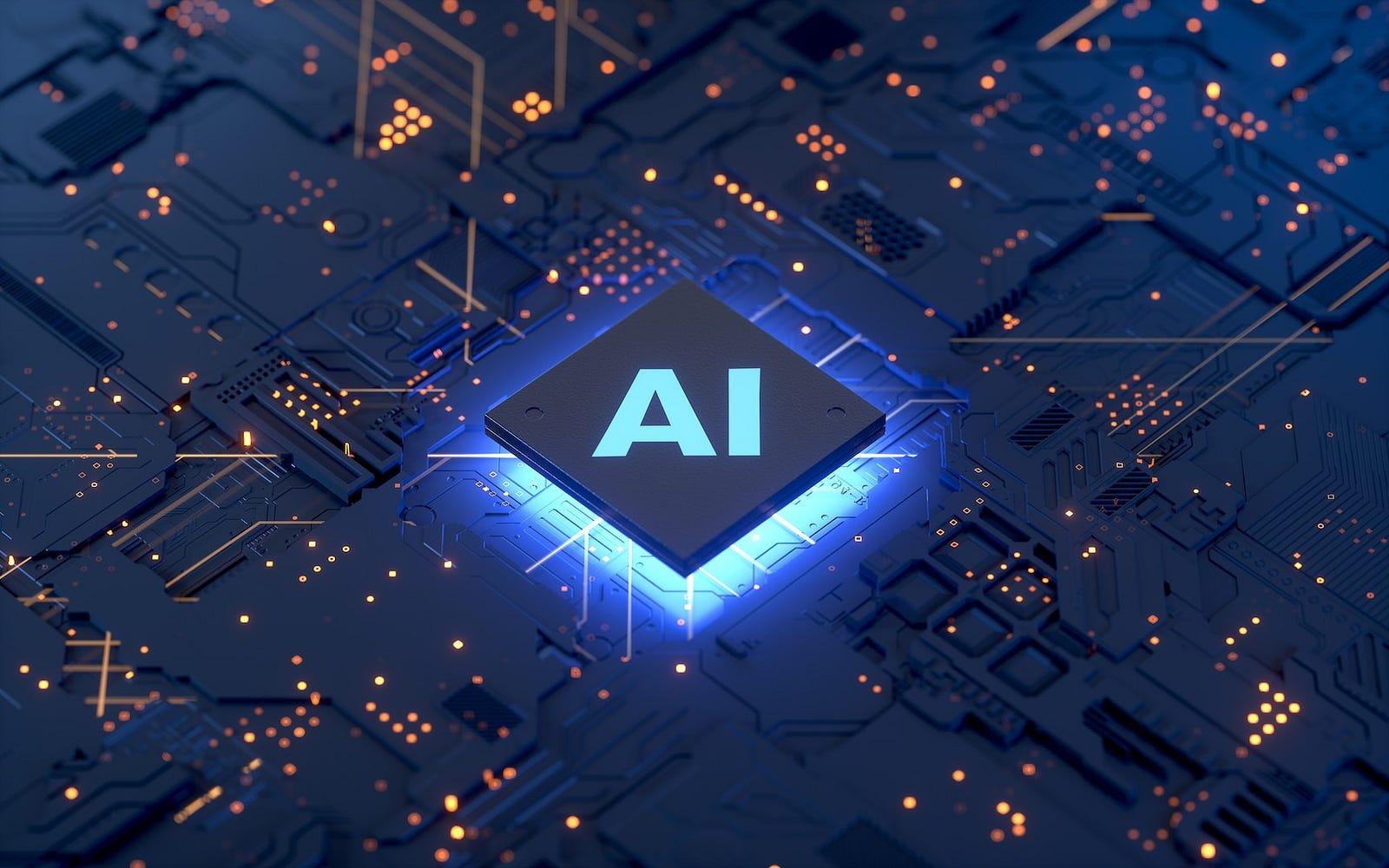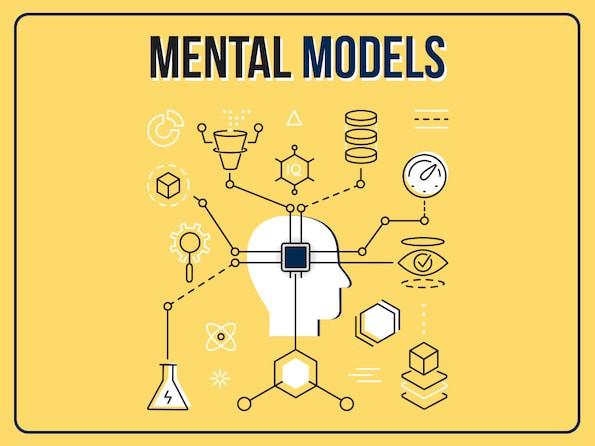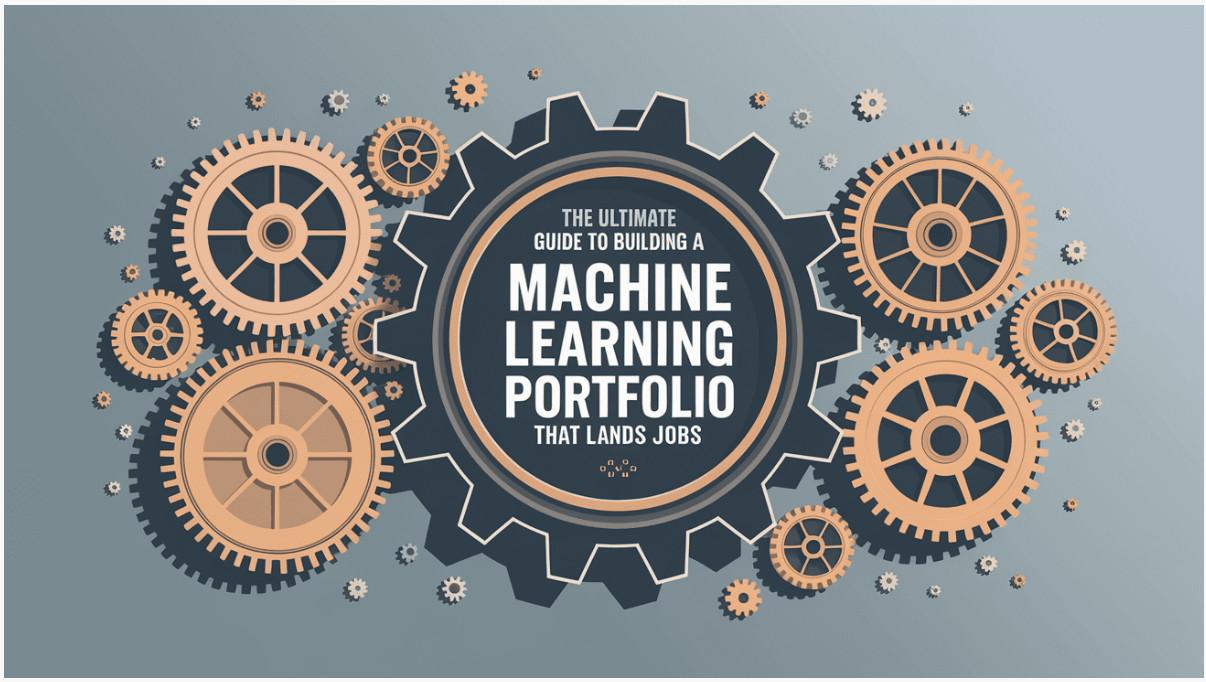Introduction: Why ML Thinking Has Become the Real Interview Metric
If you’re preparing for a machine learning interview in 2025, you might think success depends on perfect code or memorized algorithms. But here’s the truth most candidates miss: you’re being evaluated less on what you write, and more on how you think.
The top tech companies, Google, Meta, OpenAI, and Anthropic, have quietly evolved their interview frameworks. They’re no longer just testing implementation; they’re analysing mental frameworks, reasoning quality, and judgment under ambiguity.
In other words, your thought process is the product.
Why this shift? Because modern ML engineering isn’t just about solving clean textbook problems, it’s about navigating complexity.
Real-world AI systems involve uncertain data, changing objectives, and conflicting constraints. The best engineers don’t just code quickly, they reason clearly. They understand trade-offs, prioritize the right variables, and make design choices aligned with ethics, scalability, and business goals.
FAANG interviewers, especially in ML system design and applied modeling rounds, are trained to listen for how you decompose vague problems. They assess:
- Do you start by clarifying assumptions?
- Can you quantify trade-offs between model performance and interpretability?
- Do you explain your decisions in simple, logical terms?
These are the hidden metrics, the dimensions of ML thinking that separate strong coders from true machine learning engineers.
At InterviewNode, we’ve seen hundreds of candidates with flawless LeetCode performance fail ML interviews because they skipped reasoning. Conversely, engineers who structured their thoughts clearly, even with imperfect code, often walked away with offers.
This shift mirrors a broader change in AI itself: from black-box optimization to transparent, accountable reasoning.
Companies want builders who think like scientists, communicate like product strategists, and code like engineers.
So in this blog, we’ll uncover what interviewers really score, and how you can prepare for a process that’s not about rote correctness, but machine learning maturity.
Section 1: The Evolution of ML Interviews
A few years ago, machine learning interviews at FAANG and other top AI companies were predictable. You’d face a mix of coding questions, probability puzzles, and perhaps a few ML theory queries, gradient descent, bias-variance tradeoff, cross-validation. If you could implement algorithms correctly and optimize them for runtime, you’d pass.
But by 2025, those days are gone.
As machine learning matured into a production discipline, the interview landscape evolved to reflect real-world complexity. Today, hiring managers don’t just want someone who can build models, they want someone who can think in systems, reason about uncertainty, and design ML pipelines that scale responsibly.
From Algorithm Questions to Systems Thinking
Modern ML interviews are now designed to measure how engineers think about the entire lifecycle of a model, data collection, feature engineering, model choice, evaluation, deployment, and monitoring.
You might be asked:
“How would you design a fraud detection system for a global payment platform?”
This isn’t just a modeling question, it’s a thinking test. Interviewers are assessing whether you consider data bias, feedback loops, false positives, latency, and interpretability.
They’re not expecting the perfect architecture, they’re looking for how you structure your reasoning under ambiguity.
From Single-Round Judgments to Holistic Evaluation
FAANG-style ML hiring has also shifted from isolated technical rounds to multi-dimensional evaluations.
Instead of a one-off coding round, candidates now go through sequences like:
- Modeling or System Design Rounds: Assessing structure, assumptions, and trade-offs.
- Behavioral Rounds: Testing communication and problem ownership.
- Ethics or Responsible AI Screens: Evaluating awareness of fairness, transparency, and governance.
Each of these rounds measures a layer of your thinking maturity, not just correctness.
The Meta Shift: From Performance to Process
This evolution mirrors the shift happening in AI itself. Models are no longer judged solely by accuracy but by reliability, interpretability, and impact.
Likewise, engineers are now judged not by how much they know, but how responsibly and strategically they apply that knowledge.
As explained in Interview Node’s guide “Behind the Scenes: How FAANG Interviewers Are Trained to Evaluate Candidates”, today’s ML interviews are as much cognitive science as they are computer science. They’re designed to reveal how you reason, decide, and communicate, because that’s what drives scalable, ethical innovation.
Section 2: The Hidden Metrics in ML Interviews
When you walk into an ML interview at a company like Google, Meta, or Anthropic, you’re not just being evaluated on what you say, but how you think.
While most candidates believe success depends on getting the right technical answer, interviewers are actually using a hidden scorecard, one that measures reasoning patterns, structure, and judgment far more than syntax or speed.
These “hidden metrics” are the cognitive and behavioral signals that tell interviewers you’re capable of solving open-ended, ambiguous ML problems in real-world environments.
a. Clarity of Problem Framing
Before you write a line of code, interviewers assess how you understand the problem itself.
Do you clarify the goal? Ask about success metrics? Identify constraints and trade-offs?
Strong candidates pause to reframe the problem —
“So the goal is to minimize false negatives in fraud detection, even at some cost to precision, right?”
That simple statement demonstrates alignment and reasoning. You’re not guessing; you’re analyzing.
b. Data Intuition and Assumption Awareness
Every model is only as good as its data. Top interviewers quietly track whether you mention data representativeness, bias, or noise.
If you discuss exploring the data distribution, feature reliability, or how you’d test for drift, you’ve already scored on a hidden metric: data maturity.
They’re not testing your Python fluency, they’re testing your ability to think like an applied scientist.
c. Trade-Off Reasoning
ML engineering is about balancing competing objectives, accuracy vs. interpretability, recall vs. latency, automation vs. oversight.
When you mention trade-offs explicitly and justify your choice, you show judgment, not memorization.
“I’d prefer a simpler logistic model here because explainability matters more than a 2% accuracy gain.”
That single line can boost your evaluation dramatically.
d. Structured Thinking and Communication
Finally, clarity counts. Interviewers are looking for signal-to-noise ratio, structured reasoning, logical flow, and concise articulation.
They’re asking themselves:
- “Would I trust this person to reason through ambiguity?”
- “Could they explain their approach to non-technical stakeholders?”
In short, they’re evaluating your thinking architecture.
As pointed in Interview Node’s guide “Mastering Machine Learning Interviews at FAANG: Your Ultimate Guide”, every ML interview is secretly a test of cognitive design, not just code execution. The candidates who win are those who make their reasoning visible.
Section 3: How Interviewers Measure ML Thinking
Most ML candidates underestimate how much structure interviewers bring to the process. Behind the scenes, top companies like Google, Amazon, and OpenAI use behavioral scoring frameworks to evaluate the quality of a candidate’s thinking process, not just their technical correctness.
Think of the interview as a real-time X-ray of your decision-making: how you approach ambiguity, clarify assumptions, balance trade-offs, and communicate reasoning.
a. The “Structured Reasoning” Metric
Before you start coding, interviewers are scoring your ability to organize complexity.
They look for:
- Whether you clarify objectives before jumping to a solution.
- How well you decompose the problem into measurable components (data, model, metrics, validation).
- Your ability to state assumptions and test hypotheses.
A top-performing answer sounds like this:
“I’d start by defining success criteria, probably F1 or recall since false negatives matter most here. Then I’d check for class imbalance and data leakage before deciding on the model.”
That’s not code, it’s clarity, structure, and ownership.
b. The “Hypothesis Testing” Mindset
Interviewers love candidates who reason like scientists.
They want to see if you frame ideas as hypotheses, test them logically, and adapt when evidence shifts.
For instance:
“If the model underperforms on minority classes, I’d first check feature correlations before adding synthetic samples or adjusting loss weights.”
That phrasing shows adaptive reasoning. You’re not reciting; you’re diagnosing.
c. The “Model Trade-Offs” Dimension
Every senior ML interviewer is trained to test trade-off awareness.
They might ask:
“Would you choose a random forest or a deep model for this task?”
They’re not checking for a “correct” answer, they’re checking whether you recognize:
- Interpretability vs. complexity
- Data size vs. generalization risk
- Latency vs. performance
A thoughtful response like:
“A random forest would give faster interpretability for limited data, but a neural net could outperform if scaled, I’d prototype both and compare AUC under controlled validation.”
This earns top marks because it demonstrates pragmatic engineering judgment.
d. The “Communication Efficiency” Signal
Finally, how you explain your thought process determines your score.
Interviewers are assessing:
- Can you make your reasoning easy to follow?
- Do you summarize decisions before diving into details?
- Do you handle feedback with composure and flexibility?
Remember: calm, concise reasoning feels like leadership under pressure.
As explained in Interview Node’s guide “Mock Interview Framework: How to Practice Like You’re Already in the Room”, structured thinking isn’t innate, it’s trainable.
Mastering this mental scaffolding can turn your next interview from a test into a conversation of equals.
Section 4: The Thinking Dimensions of Great ML Candidates
When interviewers talk about “ML thinking,” they’re not referring to memorized concepts like bias-variance tradeoff or gradient descent. They’re talking about how you structure reasoning under uncertainty, how you make decisions with incomplete data, ambiguous requirements, and competing constraints.
In elite ML interviews, this thinking is evaluated along four key dimensions that reveal your cognitive maturity as an engineer.
a. Problem Decomposition
Strong ML candidates break complex problems into clear, solvable subproblems.
They think in layers:
- What’s the business or user problem?
- What data could represent that problem?
- What model fits the constraints?
- How will I measure and iterate?
For instance:
“If we’re predicting user churn, I’d start by segmenting user behaviors, checking data coverage, and defining churn windows before feature engineering.”
This linear, structured breakdown signals systems-level intelligence.
b. Assumption Awareness
Every ML problem rests on hidden assumptions. The best candidates surface them early, and plan for when they fail.
Example:
“I’m assuming the training and production data distributions are similar, but I’d set up drift monitoring to verify that post-deployment.”
Interviewers instantly recognize this as mature ML thinking, the kind that prevents silent model decay.
c. Hypothesis Validation
Great engineers think like experimentalists. They design, test, and iterate hypotheses.
In interviews, they say things like:
“I’d test whether feature selection improves generalization before adding model complexity.”
That’s the mark of someone who reasons with intent, not intuition.
d. Communicative Clarity
Finally, great candidates can verbalize reasoning clearly.
You can build a state-of-the-art model, but if you can’t explain it to stakeholders, you’ll lose points.
Interviewers assess how logically you narrate your thought process, are you structured, calm, and precise?
In essence, these dimensions form the thinking DNA of every standout ML engineer.
As noted in Interview Node’s guide “Soft Skills Matter: Ace 2025 Interviews with Human Touch”, technical skill wins respect, but communication, reflection, and structure win offers.
Section 5: The Role of Trade-Off Thinking
If there’s one mental skill that separates strong ML engineers from average ones, it’s the ability to reason about trade-offs.
Trade-off thinking is what transforms a coder into an architect, someone who doesn’t just optimize for accuracy, but understands the why behind every technical decision.
In modern ML interviews, this has become one of the most heavily weighted hidden metrics.
a. Why Trade-Off Thinking Matters
Every ML problem is a balancing act between competing forces: accuracy vs. interpretability, performance vs. latency, model complexity vs. maintainability.
Top engineers don’t chase “perfect models”, they make conscious, defensible compromises.
For example, in a financial credit scoring model, you might say:
“I’d prefer a simpler model like logistic regression for regulatory interpretability, even though an ensemble might improve performance slightly.”
That’s not hedging, that’s judgment. And it’s exactly what hiring panels value: engineers who align design choices with real-world constraints.
b. How Interviewers Test for Trade-Off Awareness
You’ll often face scenario-based prompts like:
“You have a model that’s 98% accurate but biased against a minority class, what would you do?”
“Would you deploy a high-latency model if it improves recall by 5%?”
There’s no right answer here. Interviewers are evaluating:
- How well you identify competing priorities.
- How transparently you reason about impact.
- Whether your thought process reflects systemic awareness rather than tunnel vision.
They’re scoring your reasoning, not your conclusion.
c. Trade-Offs as a Marker of Maturity
Junior candidates often seek the optimal model; senior candidates define the optimal boundary.
The difference lies in owning imperfection.
When you confidently acknowledge trade-offs, rather than ignore them, you’re signaling both humility and expertise.
“Improving fairness slightly reduced accuracy, but overall user trust increased, that’s a win worth taking.”
Interviewers love that mindset because it mirrors how real-world ML teams operate under business and ethical constraints.
d. How to Practice Trade-Off Thinking
The key is reflection. After solving any ML task, ask:
- What did I optimize for?
- What did I compromise?
- What unintended impact might follow?
Documenting and discussing these reflections will make your interview answers sound holistic and confident.
As highlighted in Interview Node’s guide “The New Rules of AI Hiring: How Companies Screen for Responsible ML Practices”, engineers who demonstrate trade-off awareness consistently outperform peers, not because they code better, but because they think in systems.
Section 6: Communication as a Core ML Skill
When most engineers hear “ML interview,” they picture coding, math, or architecture. Few realize that communication, the ability to think and speak clearly, is one of the most heavily weighted factors in modern evaluations.
Interviewers often call it “signal clarity” or “structured communication.” It’s not about presentation polish; it’s about how well your reasoning transfers into shared understanding. In fact, many hiring committees use communication as a tiebreaker between technically equal candidates.
a. Why Communication Matters More Than Ever
Machine learning today sits at the intersection of engineering, product, ethics, and design.
An ML engineer must translate between multiple worlds, explaining model behavior to executives, fairness issues to compliance, and design constraints to data engineers.
If you can’t communicate ideas across these boundaries, your technical brilliance remains locked inside your head.
Interviewers, therefore, listen for clarity from your very first sentence. They ask:
- Can this candidate explain their reasoning simply and confidently?
- Do they adapt their explanation to the listener’s perspective?
- Can they summarize trade-offs without losing nuance?
The best candidates sound like teachers, not because they simplify, but because they structure.
b. The Framework: “Think Aloud, Then Summarize”
A practical way to showcase clarity during interviews is to externalize your reasoning.
As you solve, narrate your thought process:
“I’m considering two options, one maximizes precision, the other interpretability. I’ll explore the trade-off by evaluating feature importance first.”
Then, summarize:
“So, I’d start with a simpler interpretable model and iterate once fairness and latency are stable.”
This technique projects calm intelligence and keeps interviewers aligned with your logic, especially when they’re scoring you on how you think.
c. Handling Pushback with Composure
When interviewers challenge your assumptions, it’s not an attack, it’s a signal test.
They want to see if you can explain your choices without defensiveness.
The right approach:
“That’s a fair question. I’d re-evaluate my assumptions using updated metrics before adjusting the architecture.”
This shows intellectual humility and adaptability, both high-value communication traits.
d. The Soft Skill That Multiplies Hard Skills
Strong communication doesn’t replace technical ability, it amplifies it.
Clear thinkers become trusted collaborators. Trusted collaborators become technical leaders.
As explained in Interview Node’s guide “Soft Skills Matter: Ace 2025 Interviews with Human Touch”, ML hiring isn’t just about brilliance, it’s about how you make complexity accessible and inspire confidence in your decisions.
Section 7: How to Practice ML Thinking
Here’s the truth: ML thinking is a skill, not a trait.
Just like model tuning or debugging, it can be trained deliberately. The problem is, most engineers don’t know how to practice it. They prepare for interviews by solving algorithmic problems or memorizing formulas, but never rehearse how they reason under ambiguity.
The best ML candidates, however, treat thinking as an iterative process. They train their mental frameworks, just like athletes train muscle memory.
a. Redefine “Practice” Beyond Coding
If your preparation only includes writing code, you’re missing half the game.
ML interview success depends on:
- Structuring messy problems.
- Communicating reasoning fluidly.
- Making trade-offs explicit.
- Reflecting on assumptions and risks.
You can’t learn these through syntax drills, you learn them through active reasoning practice.
b. Use the “Reason → Model → Reflect” Framework
A simple way to develop ML thinking is through a 3-step exercise:
Reason:
Start with a vague, open-ended question, like “How would you detect anomalies in healthcare transactions?”
Break it into subproblems: data needs, metrics, model types, and ethical constraints.
Model:
Sketch possible solutions, even on paper. Focus on why one model or feature set makes sense.
Reflect:
Ask:
- What assumptions did I make?
- What trade-offs did I accept?
- What would fail in production?
Doing this repeatedly builds cognitive endurance and clarity under pressure.
c. Practice Thinking Out Loud
Join mock interviews or record yourself reasoning through ML case questions.
Focus less on the final answer and more on how structured your explanation sounds.
Tools like InterviewNode’s mock frameworks are ideal for this, they’re designed to test ML reasoning, not just code output.
d. Learn from Real Case Studies
Study past interviews or product case analyses from companies like Google, Netflix, or Amazon.
Try reconstructing why those teams made their modeling choices, not just what they built. This builds intuition for pragmatic ML design.
As pointed out in Interview Node’s guide “Mock Interview Framework: How to Practice Like You’re Already in the Room”, reasoning aloud is the fastest way to transform your thought process from reactive to reflective, a skill every top interviewer rewards.
Section 8: Common Thinking Mistakes Candidates Make
Even talented machine learning engineers often fail interviews, not because they lack technical depth, but because they think aloud incorrectly or demonstrate flawed reasoning under pressure.
Interviewers don’t expect perfection. They expect structure, reflection, and clarity. But there are a few recurring thinking errors that cost strong candidates offers, even when their code runs flawlessly.
a. Jumping Straight to Solutions
The most common mistake? Skipping problem framing entirely.
When candidates start coding before understanding the objective or constraints, they signal reactive thinking.
A better start:
“Before I dive into models, could we clarify the primary success metric, accuracy, recall, or latency?”
This single question shows ownership and composure. It tells interviewers you understand that the best ML solution starts with the right question.
b. Ignoring Assumptions
Another red flag is failing to mention assumptions.
Every real-world ML problem rests on hidden variables, data quality, drift, feature leakage, or unbalanced labels.
When candidates act as though everything is ideal, they sound inexperienced.
Instead, state your assumptions clearly:
“I’ll assume data distributions are stable between train and test, but I’d monitor for drift post-deployment.”
Interviewers love when you surface uncertainty, it’s a marker of professional maturity.
c. Over-Optimizing for Accuracy
Many candidates still chase high accuracy at all costs. But great interviewers score higher for judgment than for metrics.
They’re looking for engineers who understand contextual optimization, when to prioritize interpretability, fairness, or efficiency over accuracy.
“I’d sacrifice a few percentage points in performance for a model we can explain to compliance teams.”
That’s a confident answer, grounded, realistic, and business-aware.
d. Rambling Without Structure
Even when reasoning is solid, poor structure kills clarity.
Interviewers listen for signal-to-noise ratio.
Avoid disorganized tangents. Speak in stages:
- Clarify the goal
- Outline your approach
- Explain reasoning
- Summarize your decision
That flow builds trust, and reflects high “thinking discipline.”
e. Defensive Reasoning
Finally, many candidates crumble when challenged.
They treat counterquestions as personal attacks instead of chances to refine their logic.
Instead of saying, “No, that’s not right,” try:
“That’s an interesting angle, I’d validate that with additional data before deciding.”
That’s humility and confidence wrapped into one, and interviewers take note.
As explained in Interview Node’s guide “Why Software Engineers Keep Failing FAANG Interviews”, what separates consistent performers from one-time successes isn’t IQ, it’s how they think when things go wrong.
Section 9: The Future of ML Interviews
The machine learning interview process is evolving faster than ever, and the direction is clear: reasoning-first hiring is here to stay.
In the coming years, the world’s leading AI companies will focus less on memorization and more on decision intelligence, how engineers think, reason, and handle ambiguity when building intelligent systems responsibly.
a. From Coding Proficiency to Cognitive Fluency
In early FAANG interviews, your success was measured in runtime efficiency and syntax precision.
By 2025, interviewers care far more about how you navigate complexity.
They’re asking:
- Can you deconstruct vague, high-stakes ML problems?
- Can you balance business impact with model performance?
- Do you reason like an experimenter or like a script executor?
This shift means your “thinking agility”, the ability to move fluidly between technical, product, and ethical perspectives, is now a primary hiring signal.
b. The Rise of “Responsible Thinking”
As AI becomes integrated into high-impact domains like finance, healthcare, and education, companies are adding Responsible ML checkpoints to hiring pipelines.
Candidates will face new types of questions:
“How would you detect bias in your model?”
“What ethical trade-offs would you consider before deployment?”
These aren’t “soft” questions, they measure judgment under uncertainty, a skill increasingly vital in regulated AI environments.
Engineers who can explain how fairness, explainability, or compliance influence design will naturally stand out in future interviews.
c. Multi-Disciplinary Evaluation Will Be the Norm
Expect ML interviews to become cross-functional.
Instead of being grilled only by data scientists or ML engineers, you’ll interact with product managers, policy specialists, and AI ethicists, each evaluating a different dimension of your reasoning.
This mirrors the real world, where successful ML projects require translating technical insight into organizational alignment.
d. Thinking as the New Differentiator
In short, the ML interview of the future won’t reward who codes the fastest, it will reward who reasons the deepest.
Candidates who show they can think systemically, reflect ethically, and communicate transparently will dominate hiring panels.
As emphasized in Interview Node’s guide “The New Rules of AI Hiring: How Companies Screen for Responsible ML Practices”, ML maturity is no longer about model accuracy, it’s about mental architecture.
Section 10: Conclusion-Thinking Is the Real Signal
The best-kept secret in modern ML interviews is that your reasoning is what interviewers are really grading.
You can write the most elegant code or recall every formula in the deep learning textbook, but if you can’t structure your thoughts, explain trade-offs, and navigate ambiguity, you won’t pass the bar.
ML interviewers are no longer testing recall. They’re testing judgment, adaptability, and reflection, the mental muscles that make you effective in production-scale AI systems.
What this means: every time you answer, narrate your reasoning like a story.
Show how you define the goal, question assumptions, evaluate options, and justify your choices.
That’s how you demonstrate ML maturity, not just technical skill.
The engineers who think aloud with purpose are the ones who consistently get hired.
“In 2025, your thought process is your resume.”
Frequently Asked Questions (FAQs)
1. What do interviewers mean by “ML thinking”?
It’s the structured process of reasoning through open-ended problems, defining goals, identifying trade-offs, testing hypotheses, and communicating clearly. It’s how you connect technical decisions to human and business outcomes.
2. How do companies evaluate thinking, not just code?
Interviewers use behavioral rubrics. They score how you clarify ambiguity, explain assumptions, structure logic, and communicate choices, not whether your code runs perfectly.
3. What are the top “hidden metrics” in ML interviews?
They include:
- Problem framing clarity
- Assumption awareness
- Trade-off reasoning
- Ethical and system-level judgment
- Communication coherence
4. Why do some great coders still fail FAANG ML interviews?
Because they focus on correctness, not cognition. They solve problems mechanically without narrating reasoning or demonstrating reflection. Interviewers can’t assess what they can’t hear.
5. How can I demonstrate strong ML reasoning?
Use a stepwise communication model:
- Define the objective.
- Ask clarifying questions.
- Discuss potential trade-offs.
- Justify your chosen direction.
- Reflect on possible risks.
That pattern alone signals maturity.
6. What kinds of questions test ML thinking explicitly?
Expect case-like questions such as:
- “How would you design a recommendation system under limited data?”
- “How would you detect bias in an NLP model?”
- “Would you deploy a complex model that’s hard to interpret?”
These assess how you reason under uncertainty.
7. How can I practice thinking more clearly for interviews?
Record yourself explaining your thought process during mock interviews.
Then, critique your structure: Did you clarify assumptions? Did you summarize takeaways?
Interview Node’s guide “Mock Interview Framework: How to Practice Like You’re Already in the Room” can help simulate this effectively.
8. Is Responsible AI part of ML thinking?
Absolutely. Ethical reasoning, fairness checks, and interpretability are now part of technical thinking.
As companies adopt AI governance standards, showing awareness of responsibility strengthens your signal.
9. What’s the single best way to impress an ML interviewer?
Talk like a systems thinker. Don’t just describe what you’d build, explain why, for whom, and with what constraints.
Engineers who connect technical design to business or human context almost always earn “strong hire” ratings.
10. What’s the future of ML hiring?
AI hiring is shifting toward cognitive depth and ethical fluency.
Companies are now scoring not just technical performance, but the thought quality behind your choices.
Those who combine coding skill with clarity, trade-off reasoning, and accountability will lead the next generation of ML engineering.
Final Thought
Machine learning interviews have outgrown their algorithmic roots.
The future belongs to engineers who think like scientists, communicate like strategists, and act like responsible innovators.
If you want to stand out, don’t just optimize your model, optimize your mindset.
Because the secret every interviewer knows is this:
“The best ML engineers don’t just build models, they build understanding.”






